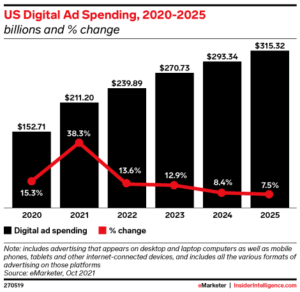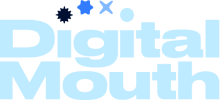The Evolution of Advertising: From Traditional to Digital
By Camron Shoushtarian, Digital Campaign Manager
Advertising has always needed to evolve to capture users’ attention from where they can get the most reach. From billboards in the mall to ads during the super bowl, this was always the train of thought for advertisers. In recent years this approach has changed. Instead of using reach, advertisers are turning to targeting a smaller pool of users that are more likely to be engaged and take action.
With the rise of digital technology, advertising has shifted to a new era of targeting, tracking, and optimizing. Read on to see how digital advertising has transformed how businesses reach and engage with their audiences and how it has evolved from traditional advertising to the more modern digital methods.
Traditional Advertising
The advertising industry was dominated by newspapers, billboards, magazines, radio, and television before the age of the internet came along. These platforms allowed businesses to reach a wide audience, but with little ability to target specific demographics or track the effectiveness of their ads.
Print Advertising
One of the earliest forms of advertising was print ads, which go back to the 17th century. These ads were placed in newspapers and magazines with the intent to promote products or services to a general audience. These were completely untargeted; the logic advertisers tried to produce was that certain magazines would be likely to appeal to select demographics. The advertiser would then make assumptions about these demographics, including interest, affinities, and what they were in market for. These assumptions were not based on data, therefore these assumptions were often inaccurate. Print ads were followed by radio and television ads, which allowed businesses to reach a larger audience through audio and visual media.
Radio and Television Advertising
Radio advertising first appeared in the 1920s and it became a popular medium for businesses to promote their products and services. Radio ads were typically 30 seconds long and were broadcasted during popular programs. The main advantage of radio advertising was that it let businesses to reach a large audience at a relatively low cost.
Television advertising became popular in the 1950s and it quickly became the dominant form of advertising. Television ads were typically 30 seconds long and were broadcasted during popular shows. The primary advantage of television advertising was that it allowed businesses to reach a large audience with audio and visual content. Similarly to traditional print advertising, very limited information was able to be gathered about audience segments.

The Digital Revolution
The rise of the internet in the 90’s started an evolution in advertising. With the emergence of digital media, businesses gained the ability to target specific users who meet a combination of criteria and track the effectiveness of their ads in real-time using a variety of qualitative metrics.
Display
One of the earliest forms of digital advertising were banner ads, a form of online advertising that typically consists of an image or animated graphic displayed on a web page. They are designed to attract the attention of the viewer and encourage them to click through to a website or landing page. Banner ads were followed by pop-up ads, which were more intrusive and often annoying to users.
Paid Search
The next major development in digital advertising was search engine marketing (SEM) which appeared in 2001. SEM allowed businesses to bid on keywords and display ads to users who were searching for specific products or services. This allowed users to appear first for searches they were bidding on meaning they would account for a higher visibility and clicks to searches. This type of advertising was highly targeted and effective as it reached users who were actively looking for what businesses had to offer.
Social Media Advertising
The rise of social media in the mid-2000s marked another turning point in the evolution of advertising. Businesses can now reach highly targeted audiences through social media platforms like Facebook, YouTube, Twitter, and Instagram.
Social media advertising, often called Paid Media, has become increasingly sophisticated, with platforms offering advanced targeting options based on demographics, interests, and behaviors. Since millennials and Gen Z use social media most, this type of advertising has become a staple for businesses. This method of advertising comes in many forms. Video, image, text only, etc. It is one of the most variable methods currently available.

Mobile Advertising
The rise of mobile devices such as smartphones and tablets has also transformed the world of advertising. Prior to this, digital advertising was only possible while users were on their computers, meaning there was limited inventory and targeting users while they were out of the house was nearly impossible. Businesses can now reach users on-the-go and serve them ads based on where they are located and based on far more detailed online activity.
The Future of Advertising
As technology continues to evolve, so too will the world of advertising. Artificial intelligence and machine learning is set to transform the way businesses create and optimize ads. AI tools will have the ability to analyze vast data sets to create highly targeted and personalized ads in real-time, far faster than any human could.
Another expected area of growth in advertising is voice search. As more homes implement voice assistants such as Alexa and Google, businesses will need to adapt their advertising strategies to reach users through this new medium. For more in-depth information about the future of marketing check out this article.
With the rise of digital advertising, there has never been a better opportunity for companies of all sizes to have an advertising presence. Unlike traditional advertising styles, digital advertising allows businesses to target specific demographics and track the effectiveness of their advertisements in real- time. This means that businesses can optimize for maximum ROI.
According to eMarketer “US digital ad spending will grow by nearly 50% in the next four years. By 2025, the digital ad market will top $300 billion—more than three-quarters of all media spending. Digital has eclipsed all other forms of advertising, but it has also outperformed our expectations several times in recent years.”
 Photo By: eMarketer
Photo By: eMarketer
The evolution of advertising from traditional to digital has transformed what is possible and allowed businesses new opportunities for how they can reach and engage with their audiences. While traditional advertising may still be a piece of your marketing mix, it’s hard to deny that digital advertising allows for far superior targeting, customization, and reporting. As marketing continues to progress, businesses will need to stay ahead of the curve to remain competitive.
At Digital Mouth, we can help your business achieve a competitive edge by utilizing the latest digital advertising strategies to reach your ideal customers using our proprietary tools. Our expertise is in digital advertising and marketing, our team of platform certified experts and data scientists can help you create and optimize your advertising campaigns to reach your ideal target audience. Contact us today to learn more about how we can help your business succeed.

